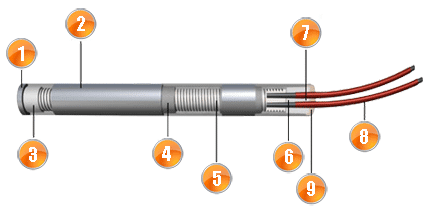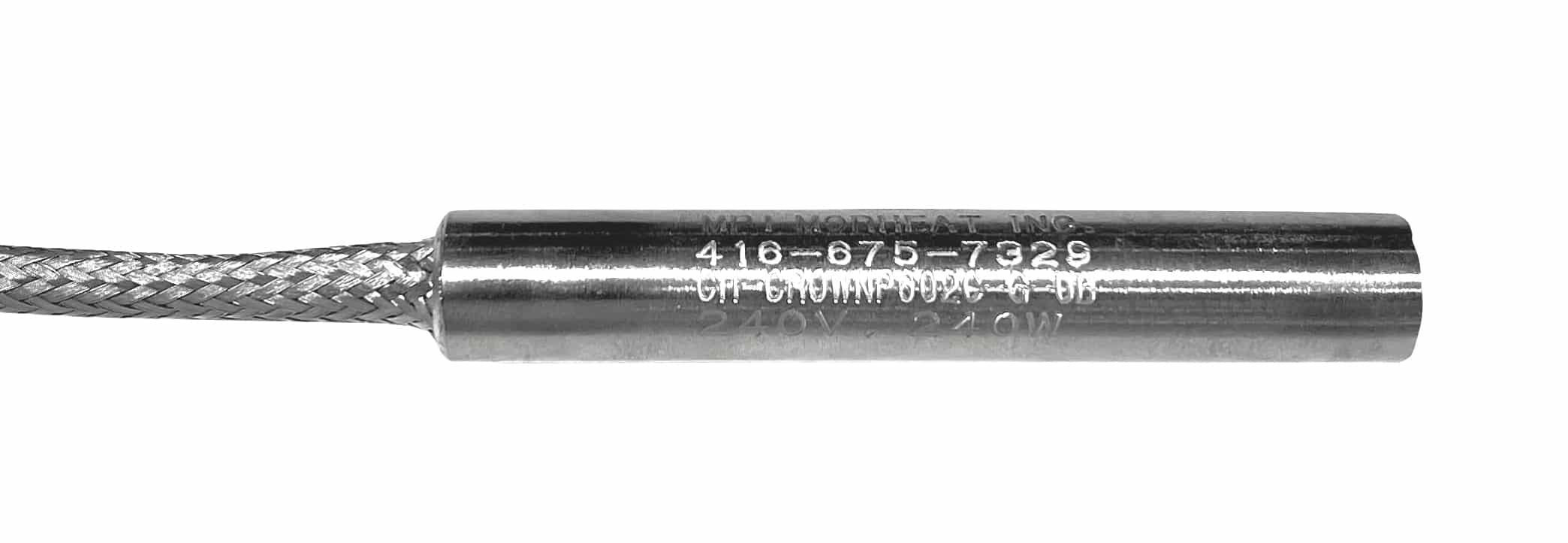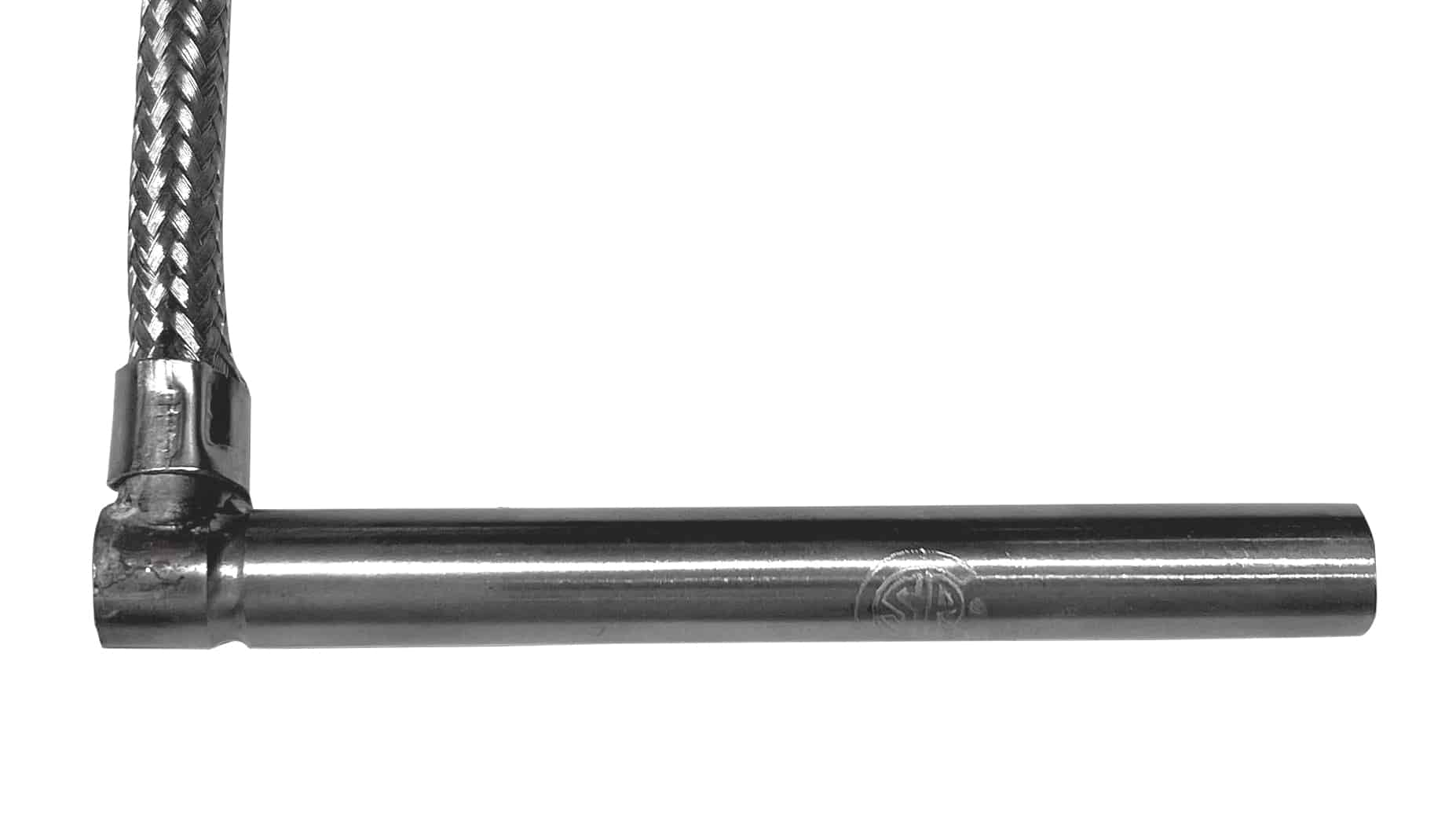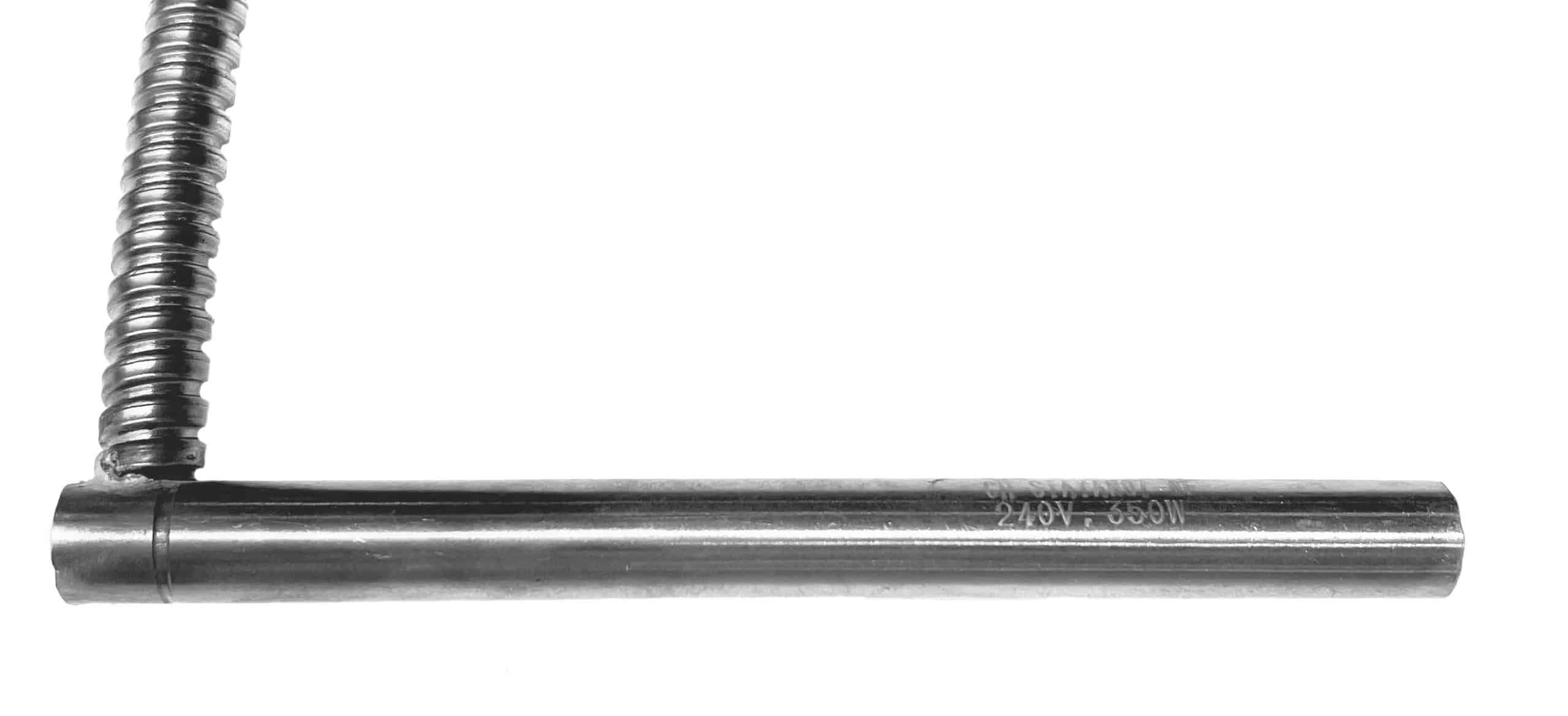Cartridge Heater Manufacturer


- Manufacturer
- Same Day Manufacturing Available
- CSAus Approved Heaters (UL Equivalent)
- Always On Time
- Fast, Cheap, and Reliable Shipping
- Quick Response Times (10 minutes or less)
Standard Lead Times
- 2-3 Weeks Manufacturing
- **Same Day Manufacturing Available**
- 1-3 days shipping
A cartridge heater is a cylindrical industrial heating element that can be inserted into drilled holes. These heaters provide precise, localized heating and are commonly used in the heating process industry. They are often used to heat metal blocks from the inside, and can be custom-made to a specific watt density based on the requirements of the application.
The heater consists of a resistance coil wound around a ceramic core that is surrounded by dielectric and encased in a metal sheath. When powered, heat is transferred through the coil to the sheath, causing it to heat up. This heat is then transferred to the inside of the metal part that needs to be heated.
For easy installation, the heaters are made slightly undersize in comparison to their nominal diameter. Drilling holes with general-purpose drills is usually adequate for low and medium temperature applications (up to 600°F). However, in high watt density applications, it is important to drill and ream the holes for a tighter fit, which will improve heat transfer and increase the heater’s life expectancy.
Cartridge heaters can operate at low, medium, and high watt densities and can withstand working temperatures of up to 1400°F. However, the optimal operating temperature will depend on the specific application. Factors such as watt density, the tightness of the fit, and the thermal conductivity of the material being heated can all impact the actual temperature of the heater and the monitored temperature of the material during the heating cycle.
Cartridge heaters are commonly used for heating dies, platens, molds, and other metal parts by inserting them into drilled holes. They can also be used in liquid immersion applications, such as heating gases and liquids, hot runner molds, hot stamping, laminating presses, medical equipment, semi-conductor, plastic molding and scientific equipment.
To effectively control the temperature of a cartridge heater, it is important to use the appropriate temperature controller and sensor. These devices should be placed between the working surface of the part and the heaters. The temperature of the part approximately 1/2″ away from the heaters is used in selecting the maximum allowable watt density. In high watt density applications, using thyristor power controls can extend the life of the heater by eliminating on-off cycling.
We can also manufacture heaters to exact diameters – ex. 0.496″ Diameter Heaters
| Diameter Sizes Available and Tolerances | |||||||||
| Sizes – Round | Sizes – Square | ||||||||
| Nom Dia | Min Dia | Max Dia | Max Amps | Max Volts | Nom Size | Min Size | Max Size | Max Amps | Max Volts |
| 1/8″ | 0.119 | 0.124 | 3.6 | 240 | 3/8″x3/8″ | 0.369 | 0.374 | 9 | 300 |
| 1/4″ | 0.244 | 0.249 | 9 | 30 | 1/2″x1/2″ | 0.494 | 0.499 | 9 | 300 |
| 6.5mm | 0.25 | 0.255 | 9 | 300 | 5/8″x5/8″ | 0.619 | 0.624 | 15 | 300 |
| 8mm | 0.309 | 0.314 | 9 | 300 | Sizes – Rectangle | ||||
| 3/8″ | 0.369 | 0.374 | 9 | 480 | Nom Size | Max Width | Max Depth | Min Watts | Max W/in |
| 10mm | 0.388 | 0.393 | 15 | 480 | 1/8″x1/4″ | 0.124 | 0.249 | 10 | 30 |
| 7/16″ | 0.432 | 0.437 | 15 | 600 | 1/8″x3/8″ | 0.124 | 0.374 | 10 | 50 |
| 12mm | 0.466 | 0.471 | 15 | 600 | 1/4″x5/8″ | 0.249 | 0.624 | 10 | 70 |
| 12.5mm | 0.486 | 0.491 | 15 | 600 | 1/4″x1″ | 0.249 | 0.999 | 10 | 100 |
| 1/2″ | 0.494 | 0.499 | 15 | 600 | |||||
| 13mm | 0.506 | 0.511 | 15 | 600 | |||||
| 17/32″ | 0.525 | 0.53 | 15 | 600 | |||||
| 14mm | 0.545 | 0.55 | 26 | 600 | |||||
| 5/8″ | 0.619 | 0.624 | 26 | 600 | |||||
| 16mm | 0.624 | 0.629 | 26 | 600 | |||||
| 17mm | 0.663 | 0.668 | 26 | 600 | |||||
| 11/16″ | 0.682 | 0.687 | 26 | 600 | |||||
| 19mm | 0.742 | 0.747 | 26 | 600 | |||||
| 3/4″ | 0.744 | 0.749 | 26 | 600 | |||||
| 20mm | 0.782 | 0.786 | 26 | 600 | |||||
| 25mm | 0.978 | 0.983 | 26 | 600 | |||||
| 1″ | 0.994 | 0.999 | 26 | 600 | |||||
- Length tolerance is +/- 3% or +/- 3/32, whichever is greater.
(*excludes disc and lead end varied formation lengths) - Camber tolerance is .025″ per foot of length. Slight camber is normally not a problem since the heater will flex enough to enter a clean hole.
- Wattage tolerance is +5%, -10%
| End Seal Options | |||||
| Type | Max Temp | Moisture Protection | Contaminant Protection | Mech. Strength | Vibration Resist. |
| Ceramic | 2500°F 1371°C | Poor | Poor | Excellent | Excellent |
| Teflon | 300°F 149°C | Excellent | Excellent | Very Good | Excellent |
| Lava | 3000°F 1649°C | Poor | Good | Good | Poor |
| Cement Potting | 1800°F 982°C | Poor | Fair | Good | Poor |
| Epoxylite Potting | 650°F 343°C | Fair | Very Good | Very Good | Excellent |
| Epoxy Potting | 265°F 129°C | Good | Good | Excellent | Excellent |
| Silicone Rubber | 500°F 260°C | Excellent | Excellent | Fair | Excellent |
| Add Ons Features | ||
| Picture | Type | Notes |
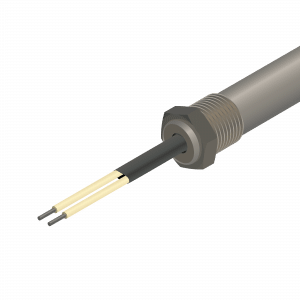 | Stainless Steel Fittings | Single or Double-ended : 1/8″, 1/4″, 3/8″NPT 1/2″, 3/4″, 1″NPT |
 | Brass Fittings | Single or Double-ended : 1/8″, 1/4″, 3/8″NPT 1/2″, 3/4″, 1″NPT |
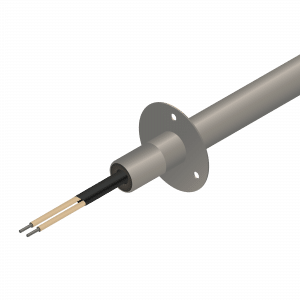 | Flanges | Standard Stainless Steel. Flanges can be round or irregularly shaped. |
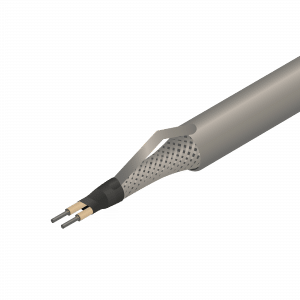 | Strain Relief | Provides extra support for leads. Great for Flexing applications |
| Special Constructions | ||
| Picture | Type | Notes |
 | Bent Heater | Must be bent in an unheated section |
 | MultiZone or Distributed Watts | Multi Zone – Up to 3 zones Distributed Wattage – custom |
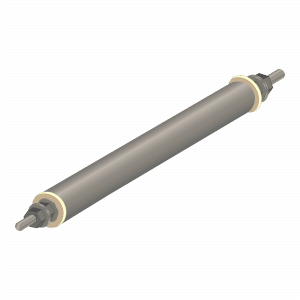 | Double Ended | Electrical Termination on Both Sides – either Lead Wires, Post terminals |
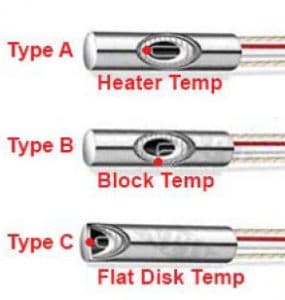 | Internal T/C | (J/K)Type A – Center Core – Heater Temperature Type B – Middle – Block Temperature Type C – End – Disk End Temperature Flat Bottom |


